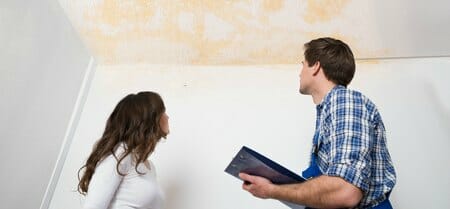Learn About Main Origins Behind Water Drips Within Your Residence
Learn About Main Origins Behind Water Drips Within Your Residence
Blog Article
What're your concepts about How Fast Water Damage Can Ruin Your Home?

Leaks not just create waste of water yet can additionally trigger unnecessary damage to your residence as well as promote unwanted natural growth. Unfortunately, water leakages may go unnoticed since a lot of the pipework in our home is concealed. By looking and also recognizing for everyday situations that trigger leaks, you can secure your house from future leaks and unnecessary damage. Today, we will certainly take a look at six leak creates that may be causing your pipes to trickle.
Elbowing in origins
Many water leakages start outside your house as opposed to inside it. If you observe a sudden reduction in water pressure, state in your tap, take time to head out and also examine your yard. You might discover damp spots or sinkholes in your backyard, which may mean that tree roots are getting into water lines causing water to seep out. You can have your plumber check for breach, specifically if you have trees or bushes near your home.
Corroded water systems
This may be the cause of staining or bending on your water pipelines. If our plumbing system is old, take into consideration changing the pipelines considering that they are at a greater danger of rust than the more recent designs.
Faulty Pipe Joints
The point at which your pipes connect is regularly the weakest web link in the waterline. Pipeline joints can degrade with time, resulting in water leaks. However, most of pipeline joints are not quickly visible. If you have noisy pipelines that make ticking or banging noises, especially when the hot water is turned on, your pipe joints are most likely under a great deal of stress. It is advisable to have your plumber inspect your system once a year.
Instant temperature level adjustments.
Extreme temperature level changes in our pipes can cause them to expand and acquire all of a sudden. This expansion as well as tightening may trigger fractures in the pipes, specifically if the temperature level are listed below freezing.
Poor Water Connectors
Sometimes, a leak can be triggered by loose tubes and pipes that supply your home appliances. Generally, moving is what creates the loosened water Connections. You might find in the case of a cleaning equipment, a tube might spring a leakage because of trembling during the spin cycle. In case of a water connections leakage, you might observe water running directly from the supply line or puddles around your devices.
Obstructed Drains
Blocked drains pipes might be irritating and inconveniencing, however they can occasionally end up causing an overflow causing break pipelines. Maintain removing any materials that may decrease your drains that might block them to prevent such troubles.
All the above are sources of leaks yet not all water leakages arise from plumbing leakages; some leaks might come from roofing system leaks. All leakages need to be fixed promptly to prevent water damage.
Leakages not just trigger waste of water but can additionally create unnecessary damage to your residence as well as promote undesirable organic development. By looking and also comprehending for everyday scenarios that cause leakages, you can safeguard your residence from future leaks and also unnecessary damages. Today, we will look at 6 leakage triggers that might be causing your pipelines to trickle.
At times, a leak can be created by loosened hose pipes and pipelines that provide your home appliances. In case of a water links leakage, you might notice water running directly from the supply line or pools around your home appliances.
How To Check For Water Leak In Your Home
How To Check for Leaks
The average household's leaks can account for nearly 10,000 gallons of water wasted every year and ten percent of homes have leaks that waste 90 gallons or more per day. Common types of leaks found in the home are worn toilet flappers, dripping faucets, and other leaking valves. These types of leaks are often easy to fix, requiring only a few tools and hardware that can pay for themselves in water savings. Fixing easily corrected household water leaks can save homeowners about 10 percent on their water bills.
To check for leaks in your home, you first need to determine whether you're wasting water and then identify the source of the leak. Here are some tips for finding leaks:
Take a look at your water usage during a colder month, such as January or February. If a family of four exceeds 12,000 gallons per month, there are serious leaks.
Check your water meter before and after a two-hour period when no water is being used. If the meter changes at all, you probably have a leak.
Identify toilet leaks by placing a drop of food coloring in the toilet tank. If any color shows up in the bowl after 10 minutes, you have a leak. (Be sure to flush immediately after the experiment to avoid staining the tank.)
Examine faucet gaskets and pipe fittings for any water on the outside of the pipe to check for surface leaks.
Undetected water leaks can happen without the home or business owner even realizing. If you suspect a water leak, but not able to find the source. It is time to contact a professional water leak detection service, The Leak Doctor.
How To Find a Water Leak In Your Home
https://www.leakdoctor.com/blog/How-To-Check-For-Water-Leak-In-Your-Home_AE197.html

As a serious reader on How to detect water leaks in your home, I assumed sharing that piece of content was sensible. Sharing is good. Helping others is fun. Thank-you for going through it.
Immediate response required? Report this page